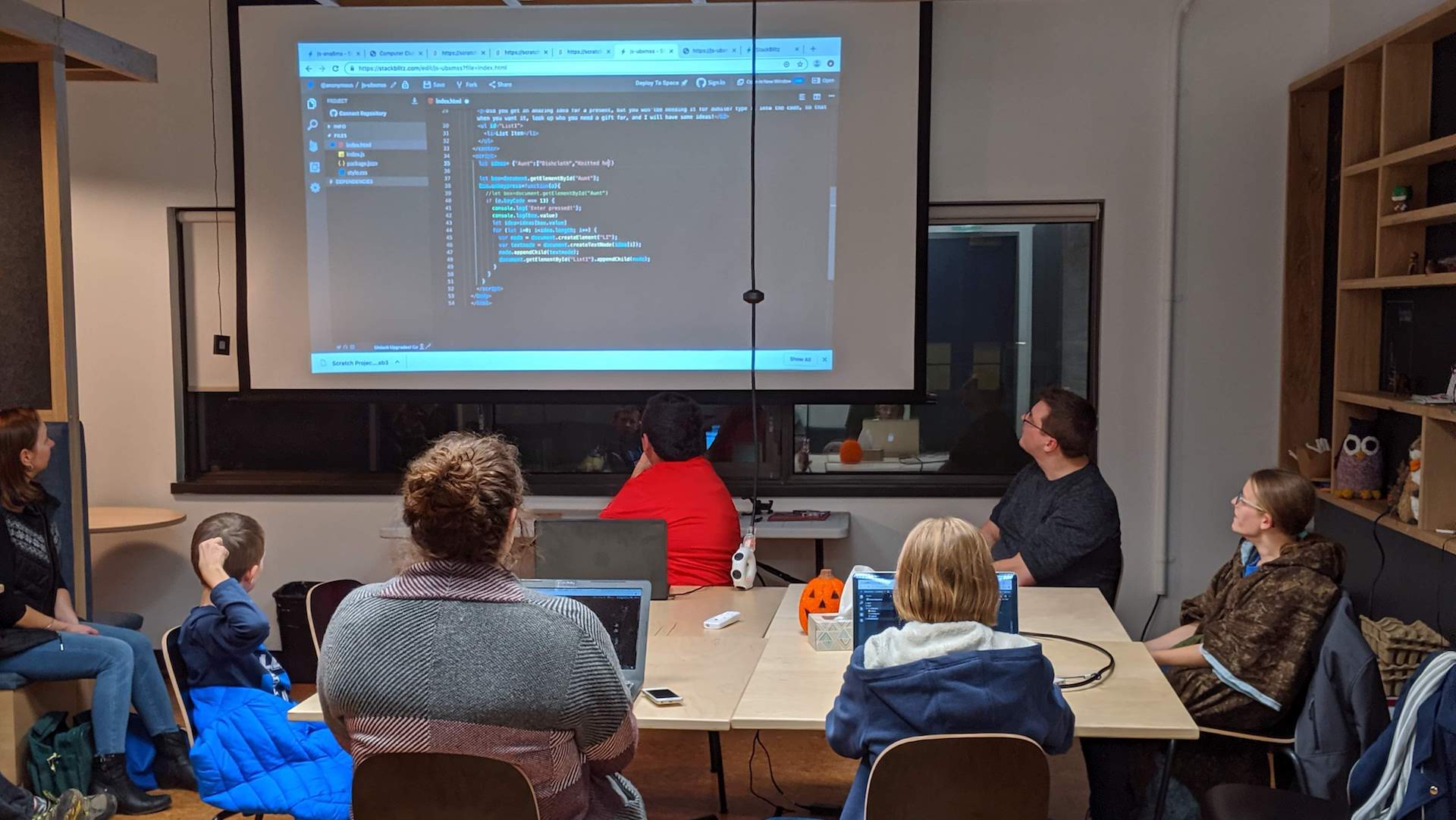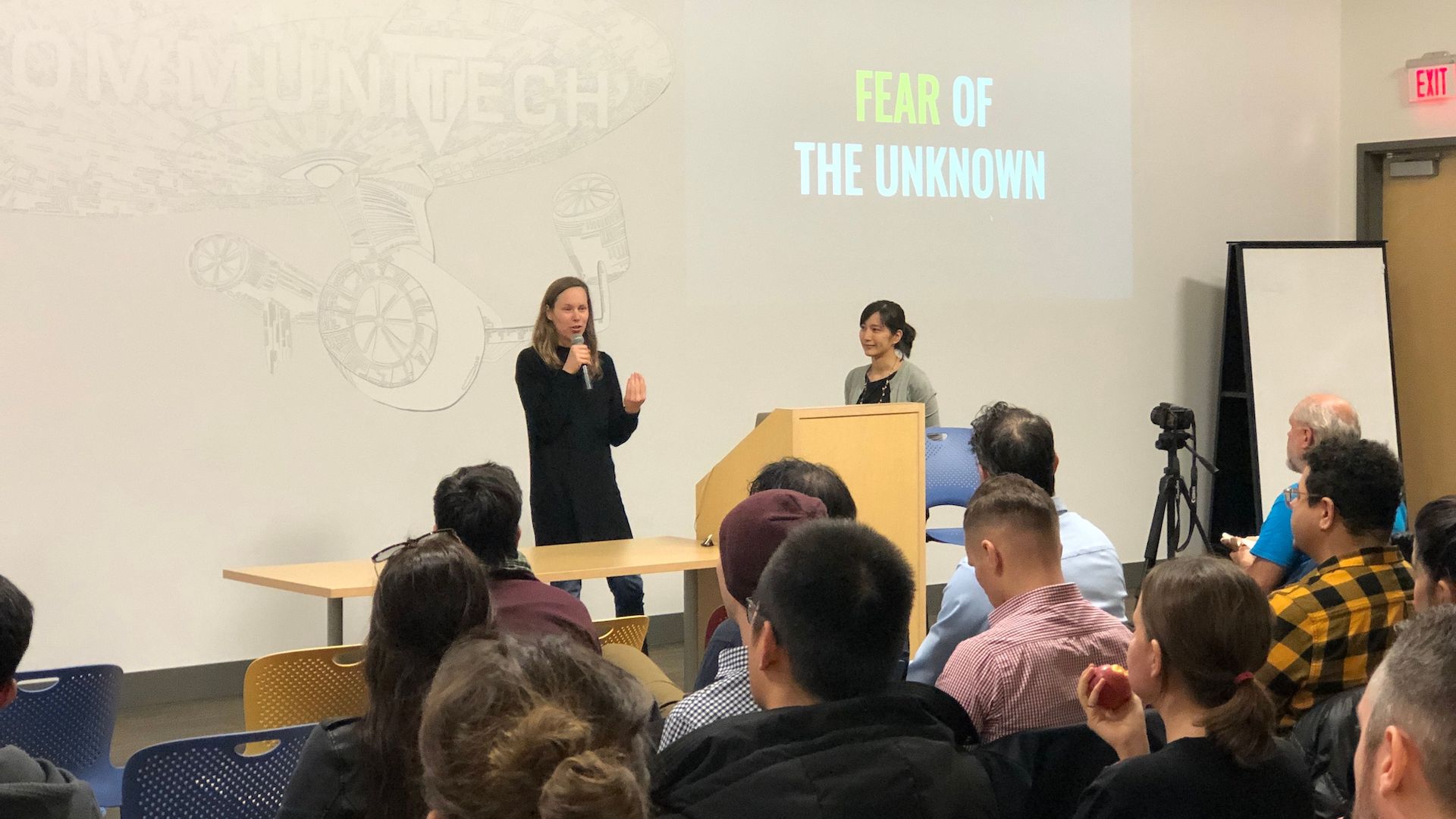It’s often said that when it comes to leadership positions, you can’t be what you don’t see.
We talk a lot about gender equity and being inclusive in tech. And sometimes it seems like that’s all we do — talk.
We lament the lack of women in the industry, we wring our hands about how to keep them, we wonder where to find women to fill roles, but do we ever move beyond all this fretting to think not only about what being inclusive means but how being inclusive behaves?
Recently, #Movethedial, an organization that aims to increase the number of women in tech, and Feminuity, a consulting firm focused on diversity, put together a playbook to help tech companies with strategies to both increase the number of women working in their organization and to keep them there in a meaningful way.
Women make up 47 percent of the labour force, but only 25 percent of workers in the tech sector, the playbook notes.
What’s more, while the tech sector is growing, the number of women in the industry hasn’t changed in the last decade. And that’s created a perception problem: Half the women surveyed for the playbook don’t think tech organizations want to hire them.
The playbook includes some helpful advice that all companies regardless of their industry should consider — ask people in your organization what would help them succeed, discuss career growth early and often, don’t assume older women workers aren’t interested in adding to their technical skills, provide mentorship opportunities, and assign chores more equitably at work.
But the best playbook won’t make any meaningful change unless we call it off the bench and insert it into our starting lineup. It’s great to have a playbook, but who’s using it? How are we tracking progress? And how do we track progress beyond tokenism to make sure we’re changing in a way that’s real and long lasting?
“This idea of retention is so important,” says Dinah Davis, vice president of research and development at Arctic Wolf, a cybersecurity company with an office in Waterloo.
Davis, who founded Code Like a Girl in 2015, says there are few women with more than 10 years of technical experience who have remained in a technical role. Davis notes she was done coding as a day-to-day job six years into her career.
Her experience is not uncommon: Few women carry on down the technical path, she says. There are lots of reasons why that happens. Sometimes women feel unwelcome. But largely it’s because they were graduating from university at a time when the pool of women in those programs hovered around 10 percent, says Davis. (At the University of Waterloo, about 13 percent of students in the Faculty of Mathematics computer science programs were women in 2012.) So when you start with an already small pool, it boils down to an almost non-existent number of women as the years tick by, she says.
“If you have one of these unicorns on your team, you want to keep them,” says Davis. “What can you do to keep the illustrious female developer that has more than 10 years of experience?”
Karen Klassen, a software developer at Zeitspace, says there was only one senior female developer at her previous tech job. That senior developer also happened to be the only mentor Klassen had at the company.
“I clung to her and when she left, I left,” she says.
Catherine Mittelholtz, another software developer at Zeitspace, says she took a four year “tech sabbatical” after becoming weary of the industry. During her time away, Mittelholtz found herself working with a group of people who were the opposite of the tech company she left: women of varying ages, races, and life experiences.
“It was almost like a culture shock after spending many previous years deep in a white male startup culture,” she says.
Even after Mittelholtz decided to return to the tech industry, the decision wasn’t an easy one. She worried the environment she left behind would still be there, with little change. But in the end she found the tech industry she returned to was better than the one she had left.
“If you don’t have genuine, welcoming people at the top of your company — regardless of gender or age — no amount of team diversity is going to ‘fix’ it,” Mittelholtz says. “This is definitely still a huge issue that our community needs to tackle. But coming back after four years away and seeing the steps people have actively taken to improve their companies and hiring practices makes me hopeful that I could, in good faith, encourage young women into technology because they will be able to find a supportive and inclusive environment here.”
The playbook is a good start. The information in it existed in various forms across the internet, says Davis, but the playbook brings it all into one place and offers organizations concrete suggestions.
“Now we need to start doing it,” says Davis. “It’s about doing it and it’s not easy.”
The report’s recommendation to recruit employees outside of the University of Waterloo and the University of Toronto bubbles struck a chord. Those are great, important schools, but the diversity of experience of graduates is important too, she notes.
“The key now is to really make sure when you’re hiring new graduates that your pipeline is diverse so that you’re not pulling people from the pool that everyone else is,” says Davis. “Usually we hire people from our network. When you hire people you know, the people you know typically look like you.”
Part of the issue, says Davis, is that software developers are in high demand. The idea that you can collect three or four candidates and half are women isn’t going to work because the demand for their skills is so high, she says.
“This is hard. It’s not an easy problem to solve,” says Davis.
While organizations can’t change the ratio of women in tech who are over 40 years old, where the industry will gain ground is in convincing 12-year-old girls to think about tech as a career. To do that, young girls often need role models, says Davis.
“They need to see what you can do as a woman in tech,” she says. “Then we can think about retention.”
In high school Klassen decided she wouldn’t pursue computer science in university because it felt like a boys’ club.
“I decided not to study computer science because it felt like in order to succeed, it needed to become your life and I didn’t want that,” says Klassen, who opted to study mathematical physics instead.
Two events are hoping to change the narrative for girls about the tech industry.
Girls in Grades 7 to 12 packed into Bingemans Conference Centre recently to learn about careers in STEM, entrepreneurship, skilled trades, and emergency services as part of Build A Dream, which aims to inspire young girls to consider a career in those fields.
And later this month, the University of Waterloo is hosting a free all-day event for girls in Grades 7 and 8 called PhysiX: Girls Matter 2019, with keynote lectures and hands-on workshops that encourage girls to explore physics.
The #Movethedial playbook could — and should — serve as a catalyst to get and keep more women in tech.
It’s time to call it off the bench and get it in the game.
(Image courtesy of wocintechchat.com licensed under CC BY 2.0)





